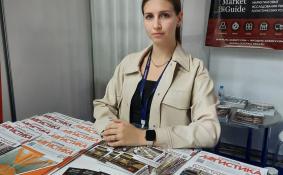
научно-практический
журнал

Новости редакции
Дорогие читатели! Представляем вашему вниманию заключительный номер журнала «ЛОГИСТИКА» в 2024 г. Мы постарались сделать его насыщенным и интересным.
Дорогие читатели! Представляем вашему вниманию 11-й номер журнала «ЛОГИСТИКА», где вы найдете актуальные материалы и статьи.
28 ноября в Москве в отеле «Золотое кольцо» прошел XI форум «Склады России: итоги года!».
Статья недели:

ФОТО НЕДЕЛИ
ЦИТАТЫ
События в российской логистике
Ups survey finds more european high tech companies are moving manufacturing closer to consumers
- 58% of survey respondents in Europe expect high-tech exports to grow
- 35% of high-tech logistics decision makers in Europe are planning on near-shoring
- 56% using new right-shoring strategy
- 66% said they are already selling products in China
- 66% have hands-on experience with 3D printing
High-tech companies in Europe expect robust growth in their industry, and they’re preparing for it by weighing a broader range of factors when building their manufacturing supply chain networks, according to the European respondents in the fifth annual global UPS Change in the (Supply) Chain (CITC) survey.
The survey, conducted for UPS by IDC Manufacturing Insights, found that while high-tech companies still favor the strategy of off-shoring as a means to cut labor costs, a large number of companies in Europe also have begun “right-shoring.” Thirty eight percent of respondents in Europe say they are adding their manufacturing sites closer to demand. This strategy optimizes the supply chain to take advantage of cost benefits and local resources to achieve the best customer service and overall profit margins.
The UPS CITC survey also shows high-tech companies are increasingly entering emerging markets and exploring 3D printing for new product designs and prototypes.
516 high-tech executives in Europe, North America, Asia Pacific and Latin America were polled by IDC for UPS. Respondents were senior high-tech supply chain professionals. The results reveal an ongoing evolution in their supply chains that affects the placement of companies’ owned facilities and the selection of their suppliers.
“High-tech companies can now respond better to demanding market dynamics because we see they are building more flexibility into their shoring strategies and supply chains,” said Scott Aubuchon, vice president marketing at UPS Europe. “Companies in Europe take a holistic approach when they evaluate their transportation costs and the time it takes to deliver their goods.”
Near-shoring, which moves manufacturing or assembly closer to the location of demand, continues to gain in popularity as companies improve service levels, reduce inventory in transit and seek greater control over product quality and intellectual property. There is a clear trend to move manufacturing and assembly closer to demand,” Aubuchon said. Thirty five percent of high-tech logistics decision makers in Europe are planning on near-shoring— up 9 percentage points from 2013 findings. Fifty four percent of respondents in Europe moved manufacturing closer to demand two or more years ago and 34% moved assembly closer to demand this year.
More than half (56%) of European company respondents see right-shoring as part of their strategy. Right-shoring balances a number of factors to determine the proximity of sourced materials to production, warehousing and distribution. These factors could include cost, quality and the time it takes to recover from any operational failures.
While UPS sees a rise in both near-shoring and right-shoring, off-shoring, which moves manufacturing or assembly to countries with low labor costs, remains the most common strategy. Fifty nine percent of European survey respondents say they currently off-shore.
Industry export growth continues; new opportunities emerge
The global growth outlook for high-tech exports is strong, including in Europe, the CITC survey showed. Thirty nine percent of the European respondents say they expect high tech industry export growth globally to increase at the current pace over the next two years, while 19% of them expect faster growth.
High-tech companies have successfully penetrated many emerging markets. Among survey respondents, 66% of European respondents say they are already selling products in China, 41% in India and 31% in Brazil. The top three markets that high-tech companies in Europe are planning to enter this year are Brazil, India and APAC countries (excluding India and China).
Although new-market penetration is high, barriers to expansion continue to evolve. Globally, navigating the regulatory environment ranks as the top barrier; however, in Europe it ranks fifth behind establishing initial operations, cultural challenges, keeping up with regulation changes and determining which markets to enter. The top regulatory concern in Europe is global or cross-border traceability and visibility cited by 44% of respondents, compared to 31% globally.
European respondents: 3D printing useful in product design
The CITC high-tech survey also shows high-tech companies increasingly are entering emerging markets and exploring 3D printing for new product designs and prototypes.
Sixty six percent of survey respondents report having hands-on experience with 3D printing, including 28% who say they are just beginning to understand the technology.
For now, high-tech companies use 3D printing mainly to spur innovation as they design new products. The top benefits include faster product development and manufacturing processes. In Europe, 70% of respondents are using 3D printing to design new products and 63% for generating spare parts, compared to just 24% of global respondents who say they use 3D printing for generating spare parts.



















